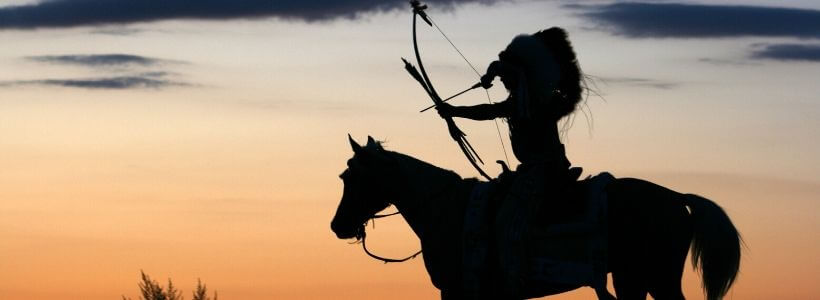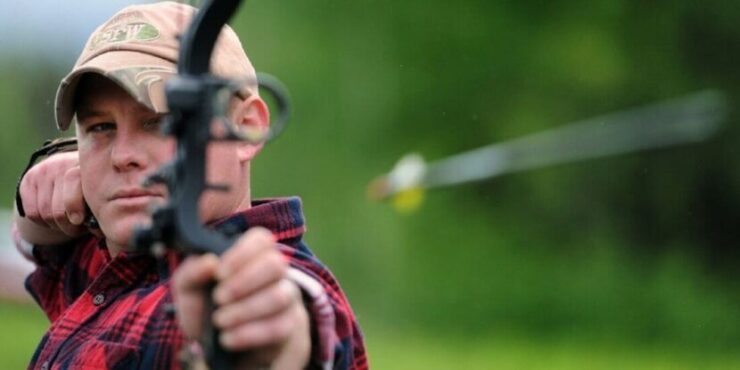There has never been a better time to get into archery. Locating established coaches and mentors is easier than ever before, not to mention that you can now find a decent number of online resources to help you sharpen your skills. Additionally, the markets are rich with wide varieties of top-quality, yet affordable gear.
If you have already started and can at the very least shoot something with a bow and arrow: congratulations, it’s now time to step up your game and perhaps try mastering how to shoot better groups with a bow.
Here’s the hard truth. Shooting better groups is difficult, and a lot of practice is necessary. It took me nearly a whole year to get skilled enough to shoot perfectly tight groups.
Fortunately, I have some tips and tricks up my sleeve that can afford you a gentler learning curve.
Check them out!
5 Tips to Enhance Your Bow-Shooting Accuracy for Tighter Groups

In between my practice sessions — and I practiced a lot, I couldn’t count the number of times I had an impulse to hurl my bow through the woods and give up on archery all together.
While I cannot promise you great results overnight, I can assure you that if you keep at it, you will eventually master one of the purest and most thrilling forms of hunting. If you want to shoot better you have to buy the most accurate target compound bow.
Get the Right Bow Fit
Getting every aspect of your form dialed in before shooting can significantly improve your accuracy. However, your shooting precision will still get hurt if you are using a bow that does not match your physical specifications.
It’s as simple as knowing your draw length and also being able to pull a more comfortable draw weight. You are likely not to grow into an Olympic caliber shooter while practicing with an ill bow fit.
Fix Your Draw Length
Your draw length refers to how far you can pull the string to a full draw. As an archer, your body size, as well as the length of your arms, plays a fundamental role in dictating how far you can pull back your bowstring.
If the draw length is too short, you will be forced to bend your elbow, and this will cause shooting inconsistencies and inaccuracies. On the other hand, anytime the draw length is too long, it will be almost impossible for you to reach a full draw.
Anytime the bow fails to fit perfectly, it also degrades your shooting form and ultimately harms your shooting accuracy. Visit a bow technician to have your draw length fixed if it’s too short or too long.
Fix Your Draw Weight
The amount of force you need to pull a bow to a full draw is known as the draw weight. It is measured in pounds, and you can either increase or decrease the draw weight by tightening or loosening the risers.
One full turn using a hex key changes the draw weight by around three pounds. Each time you adjust your draw weight, you also need to adjust the sights as well.
It’s simple; if you can’t draw your bow without raising the bow arm to aim at the clouds, the chances are that you are pulling too much weight. To get it right, loosen up the risers and ensure you can move through a draw circle in one smooth action.
Build a Consistent Anchor Point
The anchor point is the position the draw hand takes when pulling back a bowstring.
Here’s the deal, each archer has a unique anchor point, and it makes no sense to try using the same anchor point as your trainer or mentor. Some people anchor their draw hand near their jaw, while others are more comfortable with their draw hand on the cheek.
Either way, your shooting accuracy depends on your ability to find a comfortable anchor point on your face and use the same spot, shot after shot. The idea is to ensure a consistent and repeatable shot cycle every time.
Extra Tip
Make sure your peep sight is set and tied-in correctly to line up with your sight ring and target perfectly. This can dramatically improve your anchor point consistency for enhanced shooting accuracy.
Beware Of the Bubble Level
Modern archery bow sights come equipped with a bubble level. These are highly useful tools that make it easier to create a reference point for aiming. They also help to establish whether you are holding the bow correctly every single time.
It is necessary to check your level each time you draw and aim. Doing so is easy when you are standing on perfectly level ground. It can become challenging when you have to tilt your bow (even slightly) to make an uphill or downhill shot.
To ensure a repeatable and correct form, irrespective of the position of your target, you again need to confirm that your bow is held correctly before you draw.
Extra Tip
If you have excellent eyesight, archery bow sights with a smaller pin are perfect. However, larger pins are better for any archer who lacks a 20/20 vision.
Avoid Incorrect Grips
This should come as no surprise; how you grip a bow has a direct impact on your shooting accuracy. I recommend having the least possible hand contact with your bow grip. The idea is to ensure you impart as little torque as possible during the shot.
Larger bow grips are more comfortable, although they also provide more surface area for you to impart torque with your hand unintentionally.
To address this concern, a good number of bow manufacturers currently design models with smaller grips. Their products, however, feature grip plates that presumably make holding the bow correctly much easier.
Take it from me; if you want to shoot better groups, you had better unscrew that grip plate on your bow and toss it. Maintain a smaller grip so that you can barely touch it with your hand during a draw cycle.
Match the Pin Size with Your Eyes
Bow sights come in a range of configurations, from multi-pin fixed options to single-pin movers. It remains imperative to consider the pin size and pin brightness before purchasing any product.
Some archers leave the target blurry and focus on the pin, while others leave the pin blurry and focus on the target. Either way is fine.
Issues of concern arise when both the pin and the target are blurry. In this case, there is a high chance that your vision is impacting your shooting accuracy. Also, have your eyesight checked if you have trouble floating the pin on the bull’s-eye for tighter groups.
With 20/20 vision, you can shoot correctly with the small pins. As I mentioned earlier, it is better to use larger pins if you don’t enjoy the best vision. In case you face challenges seeing any part of the floating pin, the issue may be that the pin brightness or size is an ill fit for your vision.
Conclusion
Irrespective of your level of skill or the type of bow you are using, following the recommended shot sequence is crucial.
There is a sequence of steps to follow to the letter for you to improve your overall precision. Polishing up these steps and eliminating common mistakes will increase your chances of sending arrows right through the bulls-eye each time.
Once you understand the correct shot sequence or process, it will not be long before you gain mastery of how to shoot better groups with a bow. Again, you will not get good at it overnight, and the more you practice, the better you will get.

